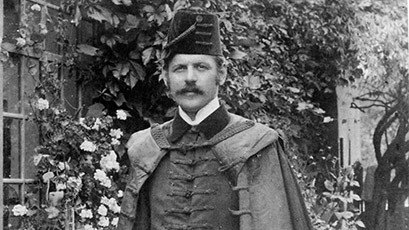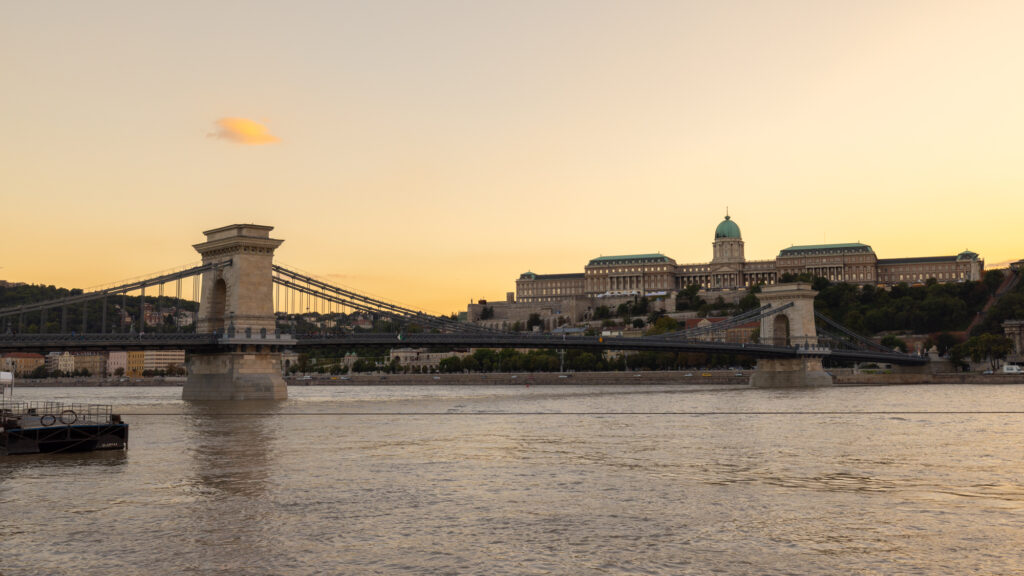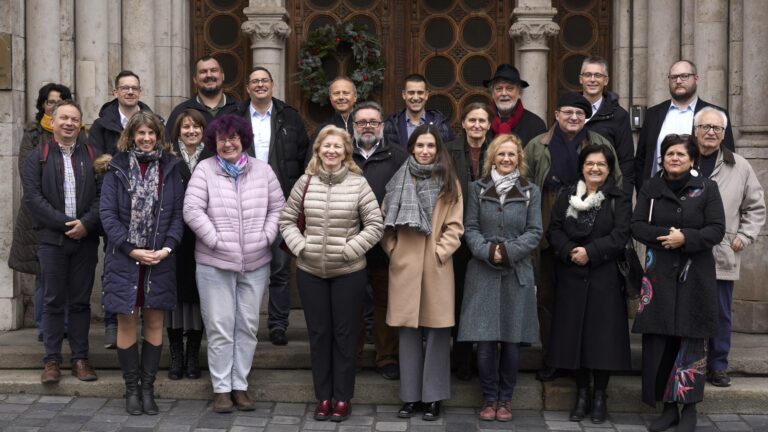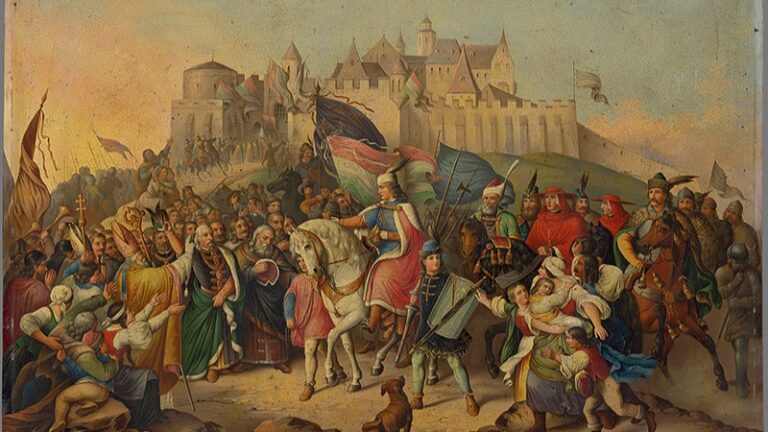Part VII: The Clothing of 20th-Century Protestant Ministers*
At the end of the 19th century, the resolution of the Debrecen Synod of 1881 seemed to have resolved the issues and disputes concerning the clothing of Hungarian Reformed ministers in the long run. The idea of introducing a ‘uniform garment’ did not even arise. However, the establishment of the National Reformed Association (Országos Református Lelkészegyesület, ORLE in Hungarian) in 1907 caused quite a stir. The organization was founded by Hajdúböszörmény pastor Dezső Baltazár, later bishop of the Transtibiscan Church District, and although there were many people—especially in Transylvania—who opposed its operation, the ORLE was able to launch a weekly titled Lelkészegyesület (Clergy Association) as early as 1908. Immediately after its formation, the uniform of ministers became a major issue. This is evidenced by the twenty-five articles, announcements, appeals, and comments on clerical garments in the first issue. Let us take a look at some of them.
On 2 April 1908, at the second meeting of the ORLE’s Budapest constituency, Aladár Kontra presented a motion on the pastoral uniform, in connection with which the convention declared that the non-unified gowns of pastors at church functions and official civil ceremonies should be eliminated.
The assembly considered it desirable that all ministers should wear the same apparel,
and so appointed Aladár Kontra to form a committee to submit a proposal to the autumn assembly. The committee was formed, and by September Kontra presented to those present the uniform designed by the ‘historical painter’ Mihály Nemes, which had been created by the Budapest clerical tailor András Csuha. The uniform consisted of a toga, a cap, a belt, and a robe. The proposal for the uniform was considered by the general assembly to be ‘suitable for adoption as the uniform of the Hungarian Reformed Church, both because of its stylish, serious, and Hungarian character, and because of its relatively low production price—180 crowns. Therefore, it recommends it to the members of the association as official clothing, so that it gradually become the unified garment among our pastors.’
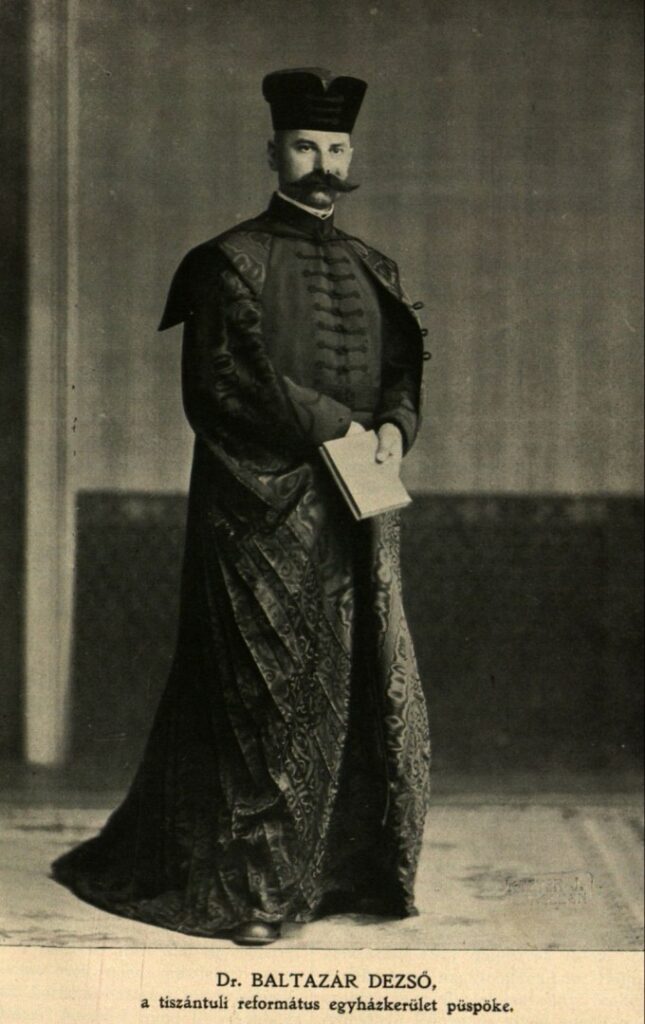
Lajos Csiky, professor of the Practical Theology Department of the Debrecen Reformed Theological University, wrote an article about the ORLE uniform for Lelkészegyesület. He wrote that the introduction of the uniform was justified because, as he recalled, there was an occasion when he himself had attended with several of his fellow pastors, and one of the believers had remarked, ‘You, twelve Reformed pastors, are dressed exactly in thirteen different ways’. Csiky also wrote that the people of Debrecen did not accept the robe designed by the tailor from Pest and asked József Szántó, a priest and master tailor from Hódmezővásárhely, to sew a new ORLE uniform. The author described the uniform made by Szántó as follows: ‘1. The toga. A long, ornate, braided vestment, modelled after old Reformed clerical garments, which gives a real serious dignity, emphasizing the honour of the pastoral office (or vocation) without embellishment. It has 15 pairs of loops (buttonholes of various motifs) with buttons in the front… 2. The decorative belt is a splendid match for the toga, and as a garment made entirely from Hungarian motifs, it is in keeping with the national character of the clergies of the Hungarian religion. 3. The robe… 4. The mitre is the so-called Cuman mitre, which experts consider to be the most evocative of genuine Hungarian clerical clothing…’
Although the ORLE uniform was presented to the jury by András Csuha, a tailor from Pest, on 29 September 1908, his name was never mentioned again in connection with the making of the garment. The 27 February 1909 issue of Lelkészegyesület kept on publishing an advertisement by József Szántó, a master craftsman from Hódmezővásárhely, for several years.
Contrary to intentions, the introduction of the ORLE uniform did not happen overnight. This is proven by the article written by Zoltán Dömény, a pastor from Magyarmekcse, which was also published in the association’s magazine: ‘We Reformed pastors are a strange people, we do not like to strive for unanimity, and we shudder at every innovation. So it is with the new clerical uniform: one does not like it because it has too many strings, another does not like it because he refuses to wear a skirt, and another because it is not suitable for our age, or because it is uncomfortable.’
Photographs taken and preserved at the beginning of the century also show that the uniform was very limited in its use.
On 2 June 1909, a photograph was taken of the diocesan clergy on the occasion of the ordination of a minister in Debrecen. Only three deacons were wearing regular ORLE uniforms. One bishop is dressed in a toga with strings and a cingulum (a cassock’s silky belt with a wide, fringed end), another deacon also wears a toga, and eight deacons wear a saloon coat under a robe of various shapes. Priestly hats also varied, with some deacons wearing black leather gloves.
On 19 September 1911, the National Reformed Association held its fifth congress in Budapest. About 400 pastors attended the meeting who had their pictures taken on the steps of the National Museum. The photograph shows that only fifteen pastors were wearing the mandated garments, and even these fifteen were wearing three different types of hats. Finally, the ORLE uniform, like so many others, was swept away by the ‘Great War’, that is, First World War.
*This article was largely based on Béla Takács’s book titled A magyar református lelkészek öltözete (The Garments of Hungarian Reformed Church Pastors), Hernád kiadó, Debrecen, 2004.
You may want to read some of the previous instalments of the series as well:

